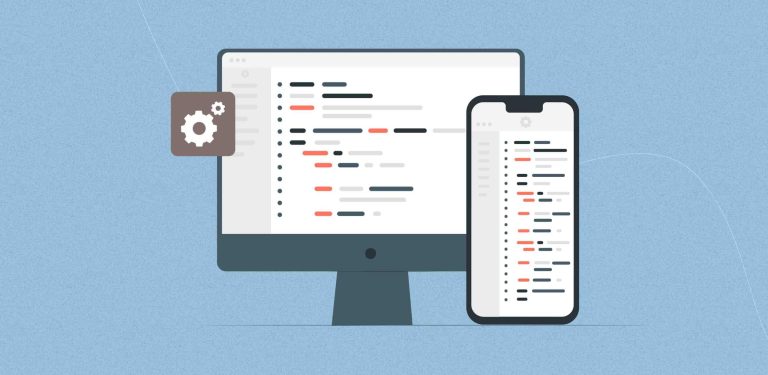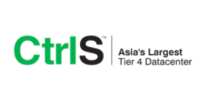


Telemedicine app development has revolutionized the healthcare industry, offering innovative solutions to meet the growing demand for remote healthcare services. These apps are no longer just an added convenience—they have become an essential tool for providing accessible, efficient, and high-quality care. Whether you are a healthcare provider aiming to enhance patient experiences or an entrepreneur exploring new opportunities, understanding the nuances of telemedicine app development is key to success.
This guide covers everything you need to know, from critical features and regulatory considerations to selecting the right telemedicine app development company for your needs.
Telemedicine app development refers to the process of designing, building, and deploying digital platforms that facilitate remote communication between healthcare professionals and patients. These platforms leverage modern technology to make healthcare more accessible, efficient, and convenient, especially for those who face barriers to traditional in-person visits.
At its core, telemedicine app development is about creating a virtual bridge between patients and medical practitioners. Through these apps, individuals can seek medical consultations, receive diagnoses, and even access prescriptions—all without the need to visit a physical healthcare facility. This innovative approach not only improves the patient experience but also optimizes the workflow of healthcare providers.
Read more to learn how telemedicine app development companies are transforming healthcare in India.
Key aspects of Telemedicine App Development:
The global telemedicine market is undergoing rapid transformation and experiencing unprecedented growth, driven by advancements in technology and shifting healthcare trends. In 2022, the market was valued at over $90 billion, with analysts predicting it will surpass a staggering $200 billion by 2030, reflecting a compound annual growth rate (CAGR) of approximately 20-25%. This explosive growth underscores the increasing reliance on telehealth app development to address critical gaps in healthcare delivery.
Key drivers of market growth
Technological Advancements
Changing Patient Preferences
Healthcare Accessibility
Cost-Efficiency
Telemedicine App Development Services are always essential for healthcare.
Telehealth applications have evolved into diverse categories, each tailored to meet specific healthcare needs. Here’s a detailed look at the major types of telehealth applications:
Real-Time Interactive Apps
Real-time interactive apps are designed to facilitate live, two-way communication between doctors and patients. These apps typically include features like video calls, audio calls, and chat functionalities, enabling healthcare providers to offer consultations, diagnoses, and follow-ups without requiring physical visits.
Key Features:
Use Cases:
Remote Monitoring Apps
Remote monitoring apps are primarily used to track and manage patients’ vital signs and health data outside traditional clinical settings. These apps often integrate with Internet of Things (IoT) devices like wearables, smartwatches, and connected medical equipment to collect real-time data.
Key Features:
Use Cases:
Store-and-Forward Apps
Store-and-forward telehealth applications focus on asynchronous communication, allowing patients and healthcare providers to share medical data, images, and records securely. Unlike real-time apps, these do not require both parties to be online simultaneously, making them ideal for non-urgent medical cases.
Key Features:
Use Cases:
Specialized Healthcare Apps
Specialized telehealth apps cater to specific areas of medicine or patient demographics. These apps are tailored to address niche healthcare requirements, providing focused tools and resources for both patients and providers.
Examples of Specialized Apps:
Key Features:
Use Cases:
A well-designed telemedicine app must be feature-rich, secure, and user-friendly to provide a seamless virtual healthcare experience. Whether for primary care, mental health, or specialized consultations, the app must cater to both patients and healthcare professionals efficiently. Below are the essential features that define a successful telemedicine app development project.
User-Friendly Interface
A simple and intuitive interface is crucial for ensuring ease of use for both patients and healthcare providers. The app should have a clean and responsive design, making it accessible to users of all age groups and technical abilities.
Key Aspects:
A clutter-free, intuitive UI/UX enhances user engagement, leading to higher patient satisfaction and retention.
HIPAA Compliance & Data Security
Security is paramount in healthcare app development, and compliance with global regulations like HIPAA (USA), GDPR (EU), PIPEDA (Canada), and HITECH ensures that patient data is protected.
Key Aspects:
Failure to comply with data protection laws can result in legal repercussions and loss of user trust, making compliance an absolute necessity.
Video and Audio Consultation
A telemedicine app must facilitate high-quality real-time communication through video and audio consultations. Patients and doctors should be able to communicate without interruptions or connectivity issues.
Key Aspects:
This feature enhances the remote consultation experience, ensuring that virtual visits feel just as effective as in-person consultations.
EHR (Electronic Health Record) Integration
Seamless EHR integration is crucial for doctors to access patient history, medications, and treatment records directly within the app.
Key Aspects:
EHR interoperability enables healthcare providers to make informed decisions, improving treatment accuracy and efficiency.
Payment Gateways for Secure Transactions
A secure and flexible payment system ensures seamless transactions for patients paying for teleconsultations, prescriptions, and other healthcare services.
Key Aspects:
A smooth payment experience improves user trust and ensures on-time billing for healthcare providers.
Prescription Management & Pharmacy Integrations
A telemedicine app should offer seamless e-prescription generation and integration with online pharmacies for hassle-free medication delivery.
Key Aspects:
By streamlining prescriptions, patients receive timely medications, reducing errors and improving compliance.
Multilingual Support for Global Accessibility
Healthcare should be accessible to diverse patient demographics, making multilingual support a key feature.
Key Aspects:
With global telemedicine adoption, multilingual support eliminates language barriers, ensuring equal access to quality healthcare.
AI and Advanced Analytics for Smarter Healthcare
Artificial Intelligence (AI) and predictive analytics enhance diagnosis, treatment plans, and patient engagement.
Key Aspects:
With AI integration, telemedicine app development becomes more efficient, leading to improved patient outcomes and reduced doctor workload.
Essential features for a Telemedicine App Development. Read more.
The healthcare industry has witnessed a significant shift with the rise of telemedicine app development, reshaping the way medical services are delivered and accessed. These apps offer an efficient, cost-effective, and patient-centric approach to healthcare, bridging geographical barriers and improving overall medical outcomes. From enhancing patient engagement to optimizing healthcare operations, telemedicine apps are proving to be an indispensable asset in modern medicine.
Improved Accessibility to Healthcare Services
One of the most transformative aspects of telemedicine apps is their ability to provide healthcare access to individuals in remote, rural, or underserved regions. Many patients face challenges in reaching healthcare facilities due to geographical constraints, limited transportation, or mobility issues. With telemedicine, patients can now connect with doctors and specialists from the comfort of their homes, ensuring timely medical intervention without the need for long-distance travel.
Convenience for Patients and Healthcare Providers
Telemedicine apps eliminate the need for in-person visits for routine consultations, prescription refills, follow-ups, and non-emergency medical care. Patients can schedule virtual appointments at their convenience, reducing waiting times and minimizing disruptions to their daily lives. On the provider side, doctors can conduct consultations more efficiently, allocate time more effectively, and reduce administrative burdens.
Cost Savings for Patients and Healthcare Facilities
By reducing the need for physical visits, telemedicine apps help both patients and healthcare facilities cut costs. Patients save on transportation expenses, childcare costs, and lost wages from taking time off work. Healthcare providers, on the other hand, can lower overhead costs associated with maintaining physical clinics, reducing the demand for infrastructure, administrative staff, and in-person resources.
Reduction in Hospital Overcrowding
Hospitals and emergency rooms often struggle with overcrowding, which can lead to long wait times and resource strain. Telemedicine apps help alleviate this burden by allowing non-emergency patients to receive care remotely. This ensures that in-person hospital visits are reserved for critical cases, ultimately improving patient outcomes and optimizing healthcare resource allocation.
Continuity of Care and Chronic Disease Management
For patients with chronic conditions such as diabetes, hypertension, or respiratory illnesses, telemedicine apps offer seamless monitoring and follow-up care. These apps integrate with wearable devices and Electronic Health Records (EHRs) to track patient vitals and provide real-time data to healthcare professionals. Remote monitoring enables timely interventions, reducing the risk of complications and hospital readmissions.
Enhanced Patient Engagement and Satisfaction
Telemedicine apps empower patients to take an active role in their healthcare journey. Features like personalized health tracking, medication reminders, AI-driven health assessments, and instant chat support improve patient engagement. The ability to receive medical advice without delays enhances patient satisfaction, leading to better adherence to treatment plans and improved health outcomes.
Improved Efficiency and Time Management for Doctors
With traditional healthcare settings, doctors often face tight schedules and time constraints. Telemedicine allows physicians to optimize their workflows by handling virtual consultations efficiently. The ability to manage appointments, access patient records instantly, and provide care remotely increases productivity and ensures that more patients receive timely medical attention.
Integration with Advanced Technologies
The future of telemedicine is being shaped by cutting-edge technologies like Artificial Intelligence (AI), Machine Learning (ML), Internet of Things (IoT), and Blockchain. AI-driven chatbots can assist in preliminary diagnosis, while wearable IoT devices can provide real-time health monitoring. Blockchain ensures secure and transparent medical records, enhancing data privacy and patient trust.
Mental Health and Behavioral Health Support
Telemedicine apps have played a crucial role in providing mental health services, particularly after the COVID-19 pandemic. Virtual therapy sessions, psychiatric consultations, and AI-driven mental wellness programs make mental health support more accessible, reducing the stigma associated with seeking professional help.
Scalability for Healthcare Businesses
For hospitals, clinics, and healthcare startups, telemedicine apps offer a scalable business model. With an increasing demand for remote healthcare, investing in telemedicine allows healthcare providers to expand their services to a broader audience, improving their revenue potential and market reach.
The rise of telemedicine app development has significantly transformed the healthcare industry, making remote consultations and virtual care more accessible than ever before. With the increasing adoption of digital health solutions, healthcare providers, hospitals, and entrepreneurs are investing in telehealth app development to stay ahead in a rapidly evolving market.
Developing a telemedicine app is not just about convenience; it is a powerful tool that improves healthcare accessibility, enhances patient engagement, and optimizes operational efficiency. Whether you are a doctor, a hospital administrator, or a business looking to enter the healthcare technology space, a well-designed telemedicine app can provide substantial benefits.
Let’s explore why investing in healthcare app development for telemedicine is a game-changing decision.
Key benefits of developing a Telemedicine App
Expanding Your Reach to a Global Patient Base
One of the most compelling reasons to develop a telemedicine app is its ability to break geographical barriers and connect healthcare professionals with patients worldwide. Traditional healthcare services are often limited to a specific region, but a telemedicine platform allows medical professionals to offer their expertise beyond local boundaries.
How does this help?
With robust compliance measures (such as HIPAA and GDPR) in place, telemedicine apps can ensure secure cross-border healthcare services while maintaining patient data confidentiality.
Enhancing Patient Satisfaction with Convenient Services
Today’s patients expect fast, convenient, and efficient healthcare solutions. Telemedicine apps cater to these expectations by allowing users to consult doctors, schedule appointments, and receive medical advice from the comfort of their homes.
Key convenience-driven benefits include:
Convenience directly correlates with patient satisfaction. The easier it is for patients to receive healthcare, the more likely they are to continue using the service and recommend it to others.
Driving Revenue Through Subscription Models and Pay-Per-Consultation Features
Telemedicine app development presents significant monetization opportunities for businesses and healthcare providers. By offering different revenue models, you can ensure a steady income stream while providing value-driven services to patients.
Popular revenue models include:
By implementing these models, telemedicine platforms can generate continuous revenue while making healthcare more accessible and affordable.
Why now is the best time to invest in Telemedicine App Development?
The demand for telemedicine solutions has surged, especially after the COVID-19 pandemic, as people seek safer and more convenient ways to consult doctors. Governments worldwide are also supporting telehealth initiatives, making it a promising domain for investment.
Compliance is one of the most critical aspects of telemedicine app development, as these applications handle sensitive patient information, financial transactions, and medical records. Any security loophole or failure to comply with regulations can lead to severe legal consequences, including fines, lawsuits, and reputational damage. Telemedicine apps must adhere to various legal frameworks that govern healthcare data privacy, security, and telehealth practices. These regulations vary by country, making it essential for businesses to understand and implement the necessary legal requirements based on their target market.
Here are some of the key legal and regulatory frameworks that telemedicine app developers must consider:
HIPAA (USA) – Health Insurance Portability and Accountability Act
HIPAA is a U.S. federal law designed to protect the privacy and security of patients’ medical information. It establishes strict guidelines on how healthcare data (Protected Health Information – PHI) should be stored, processed, and transmitted in electronic health records (EHRs) and telehealth systems.
Key compliance requirements for telemedicine apps under HIPAA:
GDPR (EU) – General Data Protection Regulation
The General Data Protection Regulation (GDPR) governs data privacy and protection across the European Union (EU) and applies to any company that collects or processes the personal data of EU citizens, regardless of its physical location.
GDPR compliance requirements for telemedicine apps:
PIPEDA (Canada) – Personal Information Protection and Electronic Documents Act
Canada’s PIPEDA regulates how businesses handle personal information, including healthcare data. It applies to telemedicine apps that collect, store, or process the personal health data of Canadian citizens.
PIPEDA compliance requirements for telemedicine apps:
Country-Specific Regulations
Each country has its own set of regulations governing telehealth app development and healthcare data protection. It is essential to research and adhere to the specific legal requirements of the country where the telemedicine app will be launched. Some notable examples include:
Choosing the right telemedicine app development company is a critical step in building a successful telehealth solution. With the growing demand for digital healthcare services, numerous development firms offer telemedicine app solutions. However, not all of them have the expertise, technical proficiency, and support necessary for a scalable, secure, and regulatory-compliant application. To ensure your investment yields the best results, you must carefully evaluate potential partners based on their industry experience, technological expertise, and ability to provide ongoing support. Below are the key factors to consider when selecting a healthcare app development company.
Industry Expertise
A company’s experience in healthcare app development is a key indicator of its ability to create a robust telemedicine platform. The healthcare sector has unique requirements, including strict regulatory compliance, data security, and interoperability with existing healthcare systems.
What to Look For:
Why It Matters:
A company with in-depth industry knowledge can anticipate challenges, recommend best practices, and ensure compliance with healthcare regulations. Their expertise reduces risks, streamlines development, and enhances the overall effectiveness of your telemedicine app.
How to Evaluate:
Technical Proficiency
A successful telemedicine app development project requires a company proficient in cutting-edge technologies. From AI-driven diagnostics to blockchain for data security, modern telemedicine apps rely on various technologies to enhance patient care and streamline operations.
What to Look For:
Why It Matters:
The right technology stack ensures seamless performance, scalability, and security. A company with expertise in these areas can build a future-proof, efficient, and innovative telemedicine solution tailored to your needs.
How to Evaluate:
Customization
Every healthcare organization has unique needs. A generic telemedicine app may not align with your operational workflows, patient engagement strategies, or regulatory requirements. Look for a telehealth app development company that offers customized solutions rather than off-the-shelf products.
What to Look For:
Why It Matters:
A customized telemedicine app ensures that the platform aligns with your workflow, enhances patient engagement, and supports future growth. Off-the-shelf solutions may lack critical features or require extensive modifications later.
How to Evaluate:
Portfolio and Reviews
A company’s past work is a strong indicator of its capabilities, reliability, and expertise in telemedicine app development. Examining a development firm’s portfolio and client reviews can help you gauge their proficiency, innovation, and ability to deliver high-quality solutions.
What to Look For:
Why It Matters:
A well-documented portfolio demonstrates the company’s experience, creativity, and problem-solving abilities. Positive reviews from previous clients validate their reliability and service quality.
How to Evaluate:
Post-Development Support
Launching a telemedicine app is just the beginning. Ongoing maintenance, updates, and technical support are essential to ensure smooth operations, security, and compliance with evolving regulations. A reliable telemedicine app development company should provide long-term support and scaling options.
What to Look For:
Why It Matters:
Without proper maintenance, telemedicine apps can face security vulnerabilities, compatibility issues, and performance slowdowns. A company offering continuous support ensures the longevity and efficiency of your application.
How to Evaluate:
A telemedicine app development is a multi-stage process that requires careful planning, execution, and post-launch support. Top telemedicine app development companies follow a structured workflow to ensure the app is secure, compliant and offers a seamless experience for both patients and healthcare providers. Below is a step-by-step breakdown of the development process followed by leading healthcare app development firms.
Requirement Analysis
The first step in telemedicine app development is understanding the client’s requirements and conducting thorough market research. This phase lays the foundation for a successful project by identifying key objectives, user needs, and technical specifications.
Key Activities:
Outcome:
A clear project scope document with detailed features, technology stack, compliance requirements, and expected development timeline.
Design and Prototyping
Once the project requirements are finalized, the UI/UX design process begins. This phase ensures that the app provides a seamless and engaging experience for both patients and doctors.
Key Activities:
Outcome:
A final UI/UX design blueprint that ensures an intuitive and accessible telemedicine app experience.
Development
With the design finalized, the actual development process begins. This phase involves frontend and backend development, database management, and API integration.
Key Activities:
Outcome:
A fully functional telemedicine app with a solid backend infrastructure and integrated APIs, ready for testing.
Testing
Testing is a crucial phase in telehealth app development to identify and fix bugs, ensure security, and optimize performance before launch.
Key Activities:
Outcome:
A bug-free, secure, and high-performance telemedicine app ready for launch.
Deployment
Once the app is thoroughly tested, it is deployed to the respective app stores or made available for enterprise use.
Key Activities:
Outcome:
A fully deployed telemedicine app that is live and accessible to users.
Maintenance
The development process does not end with deployment. Continuous app maintenance ensures long-term functionality, security, and user satisfaction.
Key Activities:
Outcome:
A continuously evolving telemedicine app with reliable performance, security, and feature enhancements.
A telemedicine app development is a game-changer for modern healthcare, but it comes with its fair share of challenges. From navigating strict healthcare regulations to ensuring data security and seamless integration with existing healthcare systems, overcoming these obstacles is crucial for building a successful telemedicine solution. Below, we explore some of the most common challenges faced by telemedicine app development companies and how they can be addressed.
Ensuring Compliance with Regional Regulations
The Challenge:
Healthcare is one of the most regulated industries worldwide. Telemedicine apps must comply with strict legal and regulatory requirements that vary by country and region. Failure to meet compliance standards can result in severe penalties, legal liabilities, and a loss of credibility among healthcare providers and patients.
Key regulations to consider:
Solution:
Managing Real-Time Data Security
The Challenge:
Data security is one of the biggest concerns in healthcare app development. Telemedicine apps handle highly sensitive patient information, including medical records, prescriptions, and financial details. A security breach can result in unauthorized access, data theft, and potential misuse of medical information.
Common Security Threats:
Solution:
Achieving Cross-Platform Compatibility
The Challenge:
Telemedicine apps must be accessible across multiple devices and operating systems, including Android, iOS, and web platforms. Ensuring seamless functionality across different devices while maintaining a consistent user experience is a significant technical challenge.
Common Compatibility Issues:
Solution:
Integrating with Third-Party Systems like EHRs
The Challenge:
Electronic Health Records (EHRs) are essential for telemedicine platforms, allowing healthcare providers to access patient history, prescriptions, and diagnostic reports. However, integrating a telemedicine app with various EHR systems can be complex due to interoperability issues, data standardization challenges, and security concerns.
Common Integration Challenges:
Solution:
Hiring the right telemedicine app development company is a crucial decision that directly impacts the success of your telemedicine platform. A well-developed app ensures seamless communication between patients and healthcare providers while complying with strict industry regulations. Before finalizing a development partner, it’s essential to ask the right questions to evaluate their expertise, reliability, and ability to deliver a high-quality, scalable solution. Below are five key questions you should ask before making your decision.
What is your experience in telehealth app development?
When choosing a telemedicine app development company, their experience in the healthcare industry is one of the most critical factors. A company with a proven track record in telehealth app development will be better equipped to handle industry-specific challenges such as data security, regulatory compliance, and seamless user experience.
Why is this important?
How to evaluate the response?
Can you provide references or case studies?
A reputable telemedicine app development company should have a strong portfolio of past projects and case studies to showcase their expertise. References and case studies provide insights into their ability to deliver high-quality products and handle project complexities.
Why is this important?
How to evaluate the response?
How do you ensure compliance with healthcare regulations?
Regulatory compliance is one of the most crucial aspects of telemedicine app development. Since these applications deal with sensitive patient data, they must adhere to local and international healthcare regulations.
Why is this important?
How to evaluate the response?
What post-launch services do you offer?
The development process does not end once the app is launched. Continuous updates, security patches, and performance monitoring are crucial for maintaining a high-quality telemedicine platform.
Why is this important?
How to evaluate the response?
What technologies will you use for the app?
The choice of technology stack impacts the app’s performance, scalability, and security. A reliable healthcare app development company should use the latest, most secure, and scalable technologies.
Why is this important?
How to evaluate the response?
Read the blog on ‘Telemedicine App Development: A Step-by-Step Guide with Enfin.’
The timeline for telemedicine app development varies based on multiple factors, including app complexity, feature set, development approach, compliance requirements, and the technology stack. A basic telemedicine app with standard functionalities can be built relatively quickly, whereas a feature-rich, enterprise-level solution with AI-driven diagnostics, EHR integration, and real-time analytics takes longer to develop.
Key factors that influence development time
App Complexity
The more complex the app, the longer it takes to develop. A simple app with basic video consultations and appointment scheduling requires less effort compared to a robust telemedicine platform with AI-driven features, multi-user support, and IoT integration for remote patient monitoring.
Features and Functionalities
The number and sophistication of features play a crucial role in determining development duration. Some common features include:
The more features required, the more time it takes to build and integrate them efficiently.
Development Methodology
The approach followed for development impacts efficiency and time-to-market:
Compliance & Security Requirements
Since telemedicine apps handle sensitive health data, regulatory compliance is a critical component. Meeting standards like HIPAA (USA), GDPR (EU), and PIPEDA (Canada) requires additional security measures such as:
Ensuring proper security and compliance measures increases development time but is essential for legal and ethical considerations.
UI/UX Design Complexity
The design of a telehealth app development project significantly influences development timelines. A simple, intuitive UI can be developed quickly, whereas a highly customized interface with animations, accessibility features, and personalized dashboards takes longer.
Technology Stack & Third-Party Integrations
The choice of technology also affects development speed.
Strategies to optimize development time
To ensure an efficient development process, consider the following:
Use Pre-Built APIs & SDKs
Implementing third-party APIs for video conferencing (Zoom SDK, Twilio, Agora) reduces development efforts.
Adopt an MVP Approach
Launch a Minimum Viable Product (MVP) with core functionalities and add advanced features in later updates.
Choose an Experienced Development Partner
A skilled telemedicine app development company with experience in healthcare app development ensures faster and more efficient execution.
Leverage Agile Development
Frequent iterations and real-time feedback improve efficiency and reduce delays.
Ensure Compliance from the Beginning
Address regulatory requirements early to avoid rework and potential legal issues.
The cost of telemedicine app development depends on various factors, including app complexity, design, feature set, compliance requirements, and the development team’s location. While some telemedicine apps are simple and offer basic consultation features, others are highly sophisticated, integrating AI-powered diagnostics, IoT-enabled remote patient monitoring, and EHR interoperability. Understanding these cost drivers can help healthcare businesses plan their budgets effectively and choose the right development approach.
Key factors affecting Telemedicine App Development cost
App Complexity and Features
The more advanced the app, the higher the development effort required. A telemedicine app can be categorized into three levels based on complexity:
Basic Telemedicine App
Intermediate Telemedicine App
Advanced Telemedicine App
The more features integrated into the app, the more resources and time will be required, impacting the overall development cost.
Platform Choice: Android, iOS, or Both
Choosing between Android, iOS, or a cross-platform solution significantly affects development costs.
If the target audience spans multiple platforms, a cross-platform solution might be more cost-effective, while a native app ensures better performance and integration with device features.
UI/UX Design Complexity
A well-designed telehealth app development solution requires an intuitive and user-friendly interface for both patients and doctors. Custom UI/UX designs, animations, and accessibility enhancements increase development time and cost. Features like:
These aspects enhance usability but require additional design resources.
Compliance and Security Measures
Telemedicine apps must comply with strict healthcare regulations and data security protocols. Ensuring adherence to laws such as:
Developing a fully compliant app requires additional investment in encryption, secure authentication, data storage, and legal consultation, which affects the total cost.
Third-Party Integrations
Many telemedicine apps integrate with third-party services to enhance functionality. Common integrations include:
Each integration requires API development, testing, and maintenance, adding to the overall cost.
Development Team Location
The geographical location of the telemedicine app development company influences the cost significantly. Developers in North America and Western Europe typically charge higher rates, while those in Eastern Europe, South Asia, and Latin America offer more cost-effective solutions.
The choice of a development partner should balance cost, experience, and expertise in healthcare technology.
Post-Development Maintenance and Updates
A telemedicine app requires continuous maintenance, updates, and security patches. Ongoing support includes:
Regular maintenance ensures the app remains secure, scalable, and up to date with the latest healthcare innovations.
The future of telemedicine app development is set to be transformative, leveraging advanced technologies to improve patient care, security, and accessibility. As healthcare continues to shift towards digital solutions, telemedicine apps will integrate cutting-edge innovations, making remote healthcare more efficient, secure, and personalized. Below are key trends shaping the future of telehealth app development:
AI-Driven Diagnostics and Predictive Healthcare
Artificial Intelligence (AI) is playing a significant role in enhancing telemedicine applications. AI-powered algorithms are capable of analyzing vast amounts of patient data, identifying patterns, and providing accurate diagnoses with minimal human intervention.
How AI is transforming Telemedicine Apps:
In the future, telemedicine app development companies will continue integrating AI to automate consultations, improve diagnostic accuracy, and provide data-driven insights for better decision-making.
Blockchain for Enhanced Data Security
Data security and privacy are major concerns in telemedicine, given the sensitive nature of patient information. Blockchain technology is emerging as a robust solution to ensure secure data transactions and prevent breaches.
How Blockchain enhances Telemedicine security:
As telemedicine adoption grows, healthcare app development will increasingly rely on blockchain to secure digital health records, facilitate insurance claims, and streamline transactions.
Wearable Devices for Real-Time Health Monitoring
Wearable technology is playing a vital role in remote patient monitoring, allowing doctors to track patients’ vital signs and health metrics in real-time. The integration of IoT-enabled devices with telemedicine apps is transforming the way chronic diseases and post-surgical recovery are managed.
How wearables are advancing Telemedicine:
The future of telehealth app development will see increased integration of wearable devices, improving preventive care, early diagnosis, and overall patient well-being.
Advanced Teleconsultation Features Like VR and AR
Teleconsultations are evolving beyond traditional video calls. Virtual Reality (VR) and Augmented Reality (AR) technologies are set to enhance remote healthcare by providing immersive and interactive consultation experiences.
How VR and AR are revolutionizing Telemedicine:
As telemedicine app development companies continue to innovate, these advanced technologies will redefine how healthcare services are delivered, making remote consultations more effective and engaging.
Telemedicine App Development bridges the gap in rural healthcare. Read the blog to explore more.
Choosing the right telemedicine app development company is crucial to the success of your healthcare platform. A reliable development partner ensures smooth project execution, compliance with industry regulations, and a robust, scalable application. However, many businesses make the mistake of partnering with companies that lack the expertise or commitment required for high-quality telehealth app development.
To avoid costly mistakes, delayed projects, and regulatory issues, here are the key red flags to watch out for when selecting a healthcare app development partner.
Lack of Relevant Industry Experience
One of the most critical factors in telemedicine app development is domain expertise. Healthcare applications require a deep understanding of compliance laws, data security, interoperability with electronic health records (EHR), and seamless real-time communication.
Red Flag: The company lacks experience in telehealth app development or has only worked on general mobile applications.
What to Look for Instead:
Why It Matters: A development company with healthcare industry experience will understand the nuances of patient confidentiality, compliance, and smooth functionality, ensuring a secure and efficient app.
Poor Communication and Unclear Timelines
Effective communication is key to a successful development project. A lack of transparency, delayed responses, or unclear project timelines can lead to costly setbacks and unmet expectations.
Red Flag: The development company is unresponsive, vague about deadlines, or frequently changes project timelines without justification.
What to Look for Instead:
Why It Matters: Poor communication often leads to project delays, misalignment on requirements, and unexpected costs. A transparent and proactive development partner ensures smooth collaboration and timely delivery.
No Emphasis on Compliance and Security
Compliance is non-negotiable in telemedicine app development. If a company overlooks security measures or fails to comply with healthcare regulations, your app may face legal issues, data breaches, and reputational damage.
Red Flag: The development company does not prioritize HIPAA (USA), GDPR (EU), PIPEDA (Canada), or other regional healthcare regulations.
What to Look for Instead:
Why It Matters: A security breach or failure to comply with regulations can result in hefty fines and loss of user trust. Choosing a security-focused development partner ensures your app meets all legal requirements and protects sensitive patient data.
Substandard Post-Launch Support
The development process does not end with launching the app. Regular updates, bug fixes, and security patches are essential to maintaining the app’s functionality and user experience. A company that does not provide post-launch support can leave you struggling with technical issues after deployment.
Red Flag: The company does not offer maintenance, updates, or troubleshooting services after app deployment.
What to Look for Instead:
Why It Matters: Apps require constant updates to stay secure, compliant, and compatible with evolving technologies. A reliable development partner ensures your telemedicine app remains functional, user-friendly, and competitive in the market.
Investing in telemedicine app development can revolutionize the way you deliver healthcare services. However, choosing the right telemedicine app development company is crucial to your success. Look for a partner with industry expertise, technical proficiency, and a strong portfolio.
Ready to bring your telemedicine app idea to life? At Enfin, we specialize in healthcare app development tailored to your needs. Contact us today for a free consultation, and let’s build the future of healthcare together.
Do you have additional questions?
Telemedicine app development involves creating digital platforms that enable remote healthcare services. These apps facilitate virtual consultations, e-prescriptions, patient monitoring, and secure data sharing, making healthcare more accessible and efficient.
To choose the right telemedicine app development company, consider:
The cost of telemedicine app development depends on several factors, including:
Developing a telemedicine app involves several stages:
Each phase is carefully planned to deliver a scalable, secure, and efficient telehealth app.
A successful telehealth app should include:
A telemedicine app must comply with:
Telemedicine apps are built using:
Common challenges include:
There are several monetization models:
A good telehealth app development company provides:

Founder, Concierge Care Plus








Founder, Concierge Care Plus